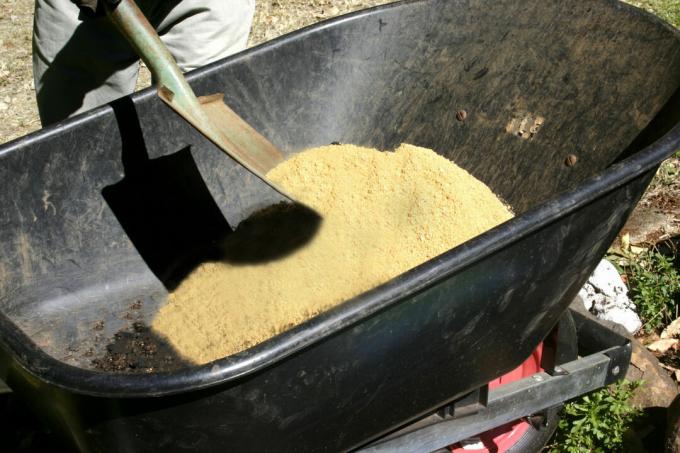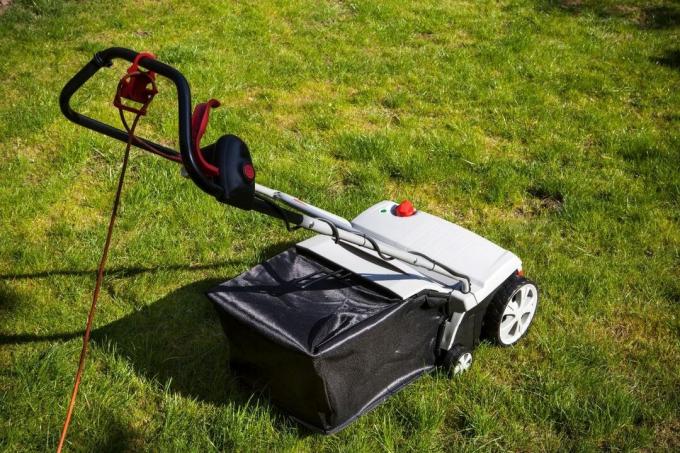
table of contents
- Reasons and advantages
- lot
- Loamy soil & unwanted plants
- Type and grain
- preparation
- Application
- Aeration
- Frequently asked question
The soil becomes more permeable and the plants stronger. race Sanding has numerous advantages: But how much sand is put on one square meter and how is the process structured?
In a nutshell
- The type of sand must be chosen correctly
- The nature of the soil determines the amount
- possible repetition of the measure necessary
- can also be carried out by laypeople
- Preparation and follow-up are important
Reasons and advantages
There are many reasons to sand a lawn. Among them are, for example:
- Soil that is prone to compaction
- bald spots
- moss
- bad growth
- Waterlogging
- weed

Because when you sand the lawn, it becomes more permeable and therefore more receptive. This means, among other things:
- better ventilation of the soil
- Nutrients can more easily penetrate the substrate
- Strengthening lawn plants
- reduces scarifying
- Water flows off faster and can therefore be saved
- general Soil improvement of the lawn
lot
As a rule of thumb, ten liters per square meter should be applied. This corresponds to about one centimeter high layer and one cubic meter of sand for 100 square meters. However, you must also take into account that various factors play a decisive role in the amount. For example:
- Type of soil
- Spread of moss and weeds
- Degree of compression

The fewer these problems, the less sand you will need. If the lawn can barely breathe, the amount is increased or the measure is repeated.
Loamy soil & unwanted plants
Substrates with a high clay content are very dense. They hold moisture for a very long time, but are difficult to water when it is dry. A larger amount of sand must be used to aerate and loosen it.
We recommend repeating the measure if necessary. This allows the individually correct amount to be found out. So initially only use ten liters per square meter and repeat the process rather than directly choosing an excessive amount.
You do not have to increase the amount of sand if you have unwanted growth in the lawn. Instead, the focus is initially on scarifying and overseeding.
Type and grain
Use quartz sand with a grain size of 0.5 mm to 1.5 mm. As a result, the sand works more quickly into the soil. Nevertheless, it loosens the substrate sufficiently.

preparation
Appropriate preparations must be made so that the sand can penetrate the lawn or the earth well. The following steps are necessary for this:
- cut the lawn
- Scarifying
- Rake

Tip: A scarifier can be rented inexpensively at the hardware store. Electronic variants are particularly useful for larger lawns, as they generate little effort.
Application
Prepare the lawn accordingly. Then start sanding. Use a spreader for this, so that an even and controlled distribution takes place.
All you have to do is drive in regular lanes and adjust the output to the appropriate amount.

Tip: You can also rent a spreader at the hardware store, but it is also worth buying. You can also use it to fertilize the lawn, for example.
Aeration
This is the ventilation of the soil. To do this, holes are made in the ground that are up to several centimeters deep. The process can be carried out easily with an aeration device. The measure also helps to work the sand into the ground more quickly.

Tip: An aerator can be borrowed from hardware stores, for example. Since the measure is rarely necessary, renting for a small fee is usually preferable to buying.
Frequently asked question
Spring is best for sanding and preparation. This allows the lawn to recover accordingly. Choose a day without blazing sun.
As often as necessary. Sanding should not take place more than once a year, as the plants are initially weakened by scarifying and therefore need time to recover.
With rain, blasting the lawn and normal use, the sand usually spreads by itself without any problems. The subsequent aeration accelerates the process.


